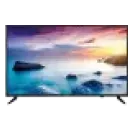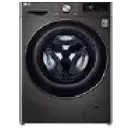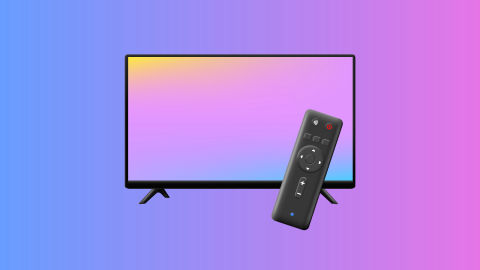UHD (Ultra-High Definition) and OLED (Organic Light Emitting Diode) represent two distinct types of display technology, each offering unique viewing experiences. UHD refers to the resolution, typically 4K, providing four times the pixels of Full HD, resulting in sharper and more detailed images. OLED, on the other hand, refers to the panel technology that offers self-lit pixels for perfect blacks, vibrant colours, and superior contrast. While UHD TVs can use various panel types like LED or LCD, OLED TVs provide a more immersive experience with their exceptional colour accuracy and infinite contrast. Explore more about
OLED TV price options.
Key differences between UHD and OLED displays
- Resolution vs. Technology: UHD refers to a resolution (3840 x 2160 pixels) that enhances image clarity. OLED is a display technology where each pixel emits its light, providing deep blacks and vibrant colours.
- Contrast and black levels: OLED delivers superior contrast and perfect blacks because individual pixels can turn off completely. UHD TVs, often using LED backlighting, may struggle with backlight bleeding and achieving deep blacks.
- Brightness: UHD TVs, particularly those with LED backlighting, can achieve high brightness levels, making them suitable for brightly lit rooms. OLED TVs offer decent brightness but excel in darker rooms due to their contrast.
- Viewing angles: OLED TVs provide wider viewing angles with consistent colour and brightness. UHD LED TVs can lose colour accuracy and brightness when viewed from the side.
- Energy efficiency: OLED TVs are generally more energy-efficient because they do not require a backlight, whereas UHD LED TVs consume more power due to their backlighting.
For more display options, consider the best
4K LED TV or the stunning
55 Inch 4K TV for your home.
Comparison table of features of UHD vs OLED TVs
| Feature | UHD | OLED |
| Resolution | 4K UHD (3840 x 2160 pixels) | 4K or 8K, combined with OLED tech |
| Contrast | Good, but limited by the backlight | Superior, infinite contrast |
| Brightness | Higher with LED backlighting | Decent, best in darker rooms |
| Viewing angles | Limited in LED models | Wide, consistent colours |
| Energy efficiency | Moderate | Higher, no backlight needed |
For a variety of options, explore
television plans to suit your preferences.
UHD vs OLED – detailed analysis of picture quality, brightness, and energy efficiency
- Picture quality: OLED offers superior picture quality with perfect blacks and vibrant colours due to its self-emissive pixels. UHD delivers sharpness and detail with higher resolution but depends on panel type for colour accuracy.
- Brightness: UHD LED TVs can achieve higher peak brightness, making them suitable for bright rooms. OLED provides decent brightness but is unmatched in darker environments due to its infinite contrast.
- Contrast: OLED excels compared with the ability to turn off individual pixels, creating true blacks. UHD LED TVs may struggle with light bleed and lower contrast ratios.
- Viewing angles: OLED TVs maintain colour accuracy and brightness from all angles, while UHD LED TVs often show colour shifts and reduced brightness when viewed from the side.
- Energy efficiency: OLED TVs are generally more energy-efficient since they do not require a backlight. UHD LED TVs consume more power due to their LED backlighting.
- Motion handling: OLED TVs offer better motion handling with faster response times, reducing motion blur. UHD LED TVs can also perform well but may not match OLED’s smoothness.
- Price: OLED TVs are more expensive due to their advanced technology. UHD TVs are more affordable, especially in larger sizes.
For a premium viewing experience, consider the
OLED 65 Inch TV that offers a blend of stunning visuals and advanced technology.
Updated price list of UHD and OLED TVs in India (2025)
| Model | Price (in Rs.) |
| SAMSUNG 163 cm (65 inch) OLED Ultra HD (4K) Smart Tizen TV | Rs. 12,999 |
| TOSHIBA C350NP 108 cm (43 inch) Ultra HD (4K) LED Smart Google TV 2024 edition | Rs. 25,999 |
| Hisense E68N 108 cm (43 inch) QLED Ultra HD (4K) Smart Google TV | Rs. 28,999 |
| LG OLED A3 121 cm (48 inch) OLED Ultra HD (4K) Smart WebOS TV | Rs. 72,861 |
Disclaimer: The features, availability, and pricing of each model are subject to change and may vary. For the most accurate and up-to-date information, please visit the official website.
Head to your nearest partner store to explore and choose from an extensive range of leading TV brands. Purchase your preferred TV with Bajaj financing options and repay the amount over flexible tenures ranging from 1 month to 60 months.
Financing options with Bajaj Finserv:
Delve into the features of UHD and OLED TVs on
Bajaj Mall. Once you have gathered all the necessary details, visit the nearest Bajaj Finserv partner store to pick your preferred products. Complete your purchases and select a repayment plan that matches your financing situation and enjoy easy EMIs, simplifying and making your shopping more cost-effective.
Benefits of shopping with Bajaj financing options
- Easy EMIs: The Bajaj Finserv EMI Network makes buying your desired TV hassle-free. Choose a flexible tenure and repay in Easy EMIs, making your purchase affordable and stress free.
- Zero down payment: Forget about the hassles of an initial lump sum payment as select products are covered under the zero down payment policy, allowing you to buy now and pay later without upfront costs.
- Wide range and accessibility: Buying your favourite products has never been this easy. The Bajaj Finserv EMI Network offers a wide range of products, available at our partner stores across multiple cities, ensuring you have plenty of choices.
- Special deals and cashback: By using the Bajaj Finserv finance options, you can access exciting deals and cashback offers, making your shopping experience even more rewarding.
- Complimentary home delivery: To add convenience, select products are delivered free of cost, ensuring that your purchase reaches your doorstep without any additional charges.











